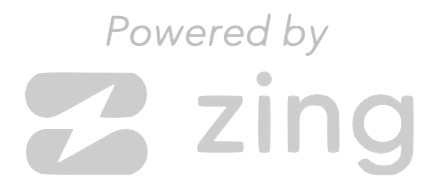Why Cash Flow Forecasting is Essential for Business Survival
Why Cash Flow Forecasting is Essential for Business Survival
One of the most important aspects of running a business is managing cash flow—the money coming in and going out of your business. Many small businesses struggle not because they’re unprofitable, but because they run out of cash to cover expenses. That’s where cash flow forecasting comes in.
Cash flow forecasting allows you to predict your business’s future financial position, helping you avoid cash shortages, prepare for growth, and stay ahead of potential financial challenges. In this blog, we’ll explain why cash flow forecasting is critical for business survival and how it can lead to better decision-making.
What is Cash Flow Forecasting?
Cash flow forecasting is the process of estimating the flow of cash in and out of your business over a given period, typically weekly, monthly, or quarterly. A good cash flow forecast gives you a clear picture of how much money you’ll have on hand to cover expenses, invest in growth, or handle unexpected events.
Why Cash Flow Forecasting is Essential
- Prevents Cash Shortages: A cash flow forecast helps you identify periods when you may face cash shortages—when your outgoing payments (bills, payroll, loan payments) exceed your incoming cash (customer payments, sales revenue).
- Benefit: By anticipating cash shortages, you can take action to cover expenses by securing short-term financing, delaying certain payments, or cutting unnecessary expenses.
- Helps Plan for Growth: If you’re planning to expand your business, a cash flow forecast can help you understand whether you have the financial capacity to do so. It allows you to plan for increased expenses (e.g., hiring new employees, purchasing inventory) and ensure that you’ll have enough cash to support your growth.
- Benefit: With a clear cash flow forecast, you can confidently invest in your business’s future without worrying about running out of cash.
- Improves Decision-Making: Cash flow forecasting provides insight into when you’ll have extra cash on hand and when you might face a crunch. This allows you to make informed decisions about when to make purchases, pay down debt, or take advantage of investment opportunities.
- Benefit: You can avoid making decisions that could negatively impact your cash flow and instead make choices that support the long-term financial health of your business.
- Prepares You for Seasonal Fluctuations: Many businesses experience seasonal fluctuations in sales. Cash flow forecasting helps you prepare for slow periods by ensuring you have enough cash reserves to cover operating expenses during low-revenue months.
- Benefit: With proper forecasting, you can avoid financial stress during seasonal downturns and make the most of high-revenue periods.
- Reduces Financial Stress: Knowing that you have a handle on your future cash position can significantly reduce the stress of running a business. You’ll be better prepared to handle emergencies, cover unexpected expenses, and maintain a smooth financial operation.
- Benefit: Cash flow forecasting gives you peace of mind, knowing you have a plan in place for whatever financial challenges come your way.
How to Create a Cash Flow Forecast
- Review Historical Data: Start by looking at your business’s past cash flow patterns. Review bank statements, invoices, and payment records to understand how money has flowed in and out of your business over the past several months or years.
- Estimate Future Income: Based on your historical data and current trends, estimate the amount of cash you expect to receive over the forecasting period. Include sales revenue, customer payments, and any other sources of income.
- Estimate Future Expenses: Identify all the expenses your business will incur during the forecasting period, including rent, payroll, loan repayments, taxes, and supplier payments. Be sure to account for both fixed and variable costs.
- Create the Forecast: Subtract your estimated expenses from your estimated income for each period (e.g., each month). This will give you a clear view of whether you’ll have a cash surplus or deficit during the forecast period.
- Update Regularly: Cash flow forecasting is not a one-time task. Regularly update your forecast as new information becomes available, such as changes in customer payments, expenses, or market conditions.
Conclusion: Cash Flow Forecasting is Key to Business Survival
Cash flow is the lifeblood of your business, and without proper forecasting, you risk running into financial difficulties—even if your business is profitable. By consistently forecasting your cash flow, you can prevent cash shortages, plan for growth, make informed decisions, and reduce financial stress.
At Sihamkami Bookkeeping Services, we can help you create accurate cash flow forecasts to ensure your business’s financial stability. Contact us today to learn how we can support your financial management and help your business thrive.


